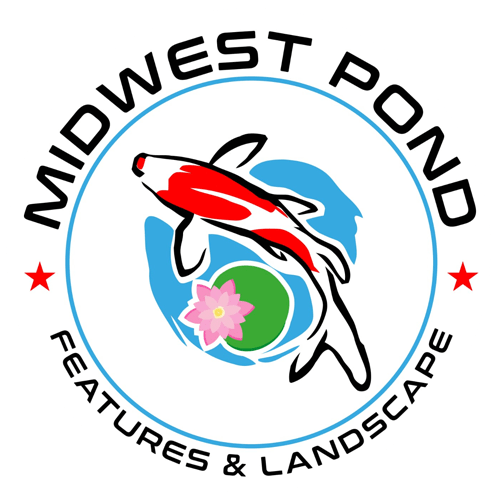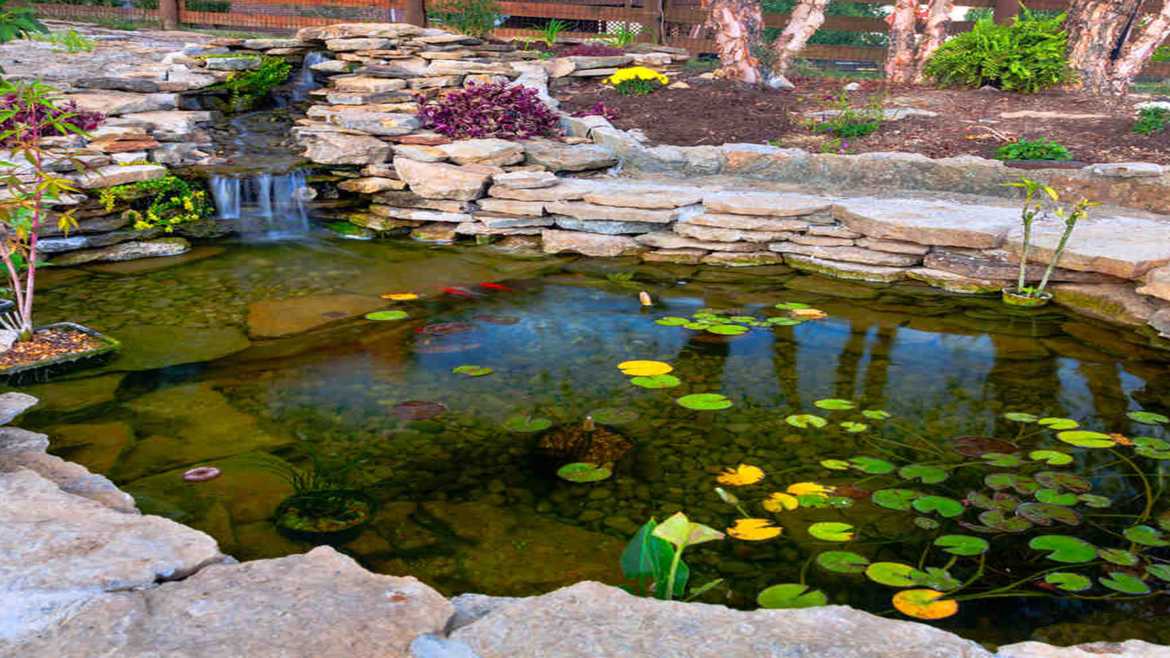Koi pond maintenance is a task that demands utter dedication, constant effort, and a depth of knowledge. It involves infinite factors, from optimal water quality management to feeding regimes, and requires excellent attention to detail.
Koi pond for beginners requires understanding and adherence to the most appropriate koi pond care measures while protecting the fish’s well-being and the general ecosystem.
One might wonder are koi ponds hard to maintain. This blog will delve into how to maintain a koi pond and the problems often found in koi ponds and give helpful advice and solutions to fix them.
These tips will help you in koi pond maintenance and appreciate its serene beauty in the backyard.
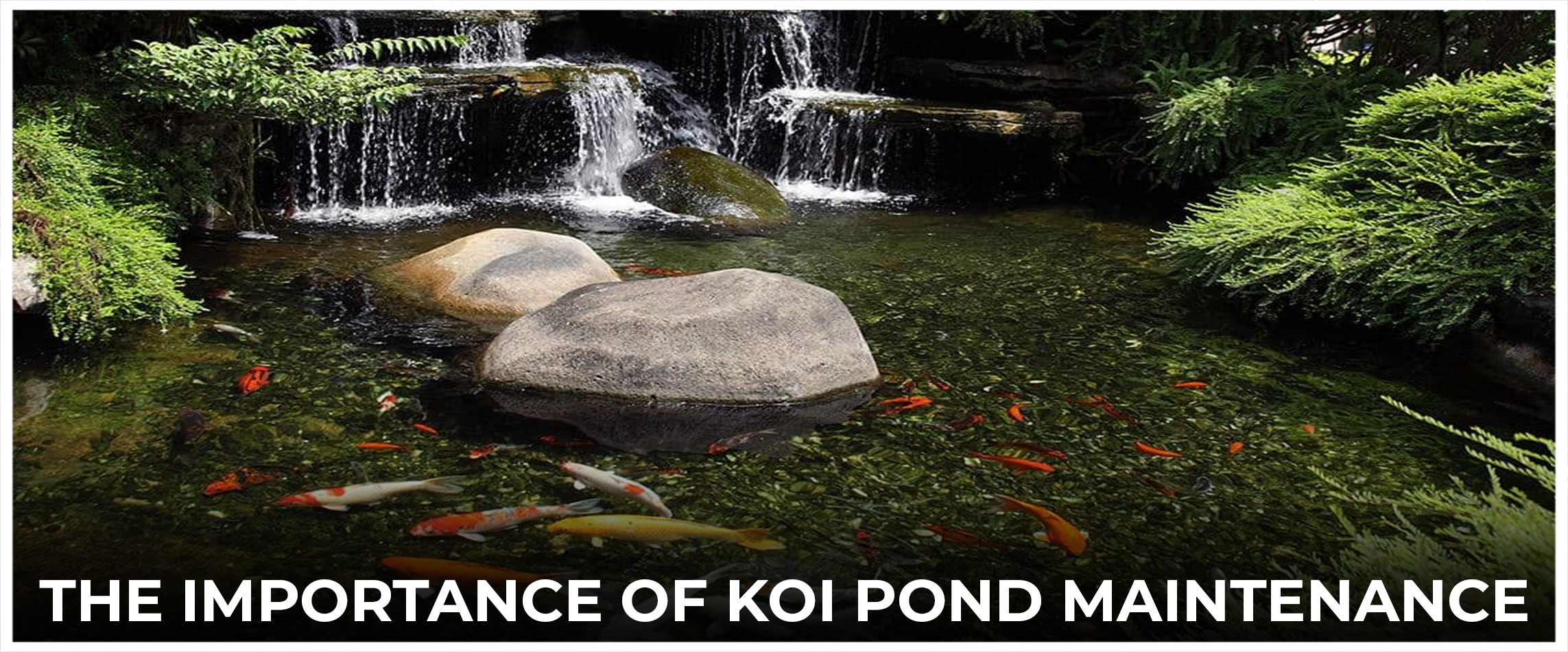
The Importance of Koi Pond Maintenance
A koi pond is not only visually appealing, but its value also includes the fish’s health, well-being, and environment.
One might wonder how to maintain a koi pond. First, regular koi pond maintenance ensures the best water quality, which is crucial for koi fish survival, growth, and care.
Maintaining the equilibrium of pH, good filtration, and enough oxygenation supports the fish’s respiratory system and promote its general health.
Owners can eliminate problems like excessive algae growth and disease outbreaks by controlling and maintaining water parameters, allowing koi fish maintenance.
In addition to how to take care of a koi pond, koi fish pond maintenance promotes a healthy environment that allows the fish to swim, play, and reproduce quickly.
An abundant water supply, ecologically appropriate space, and suitable habitat conditions are the basis for keeping the fish lively, beautiful, and colorful.
Enhance The Flow Of Circulation
For koi pond care, filtration should be taken seriously, but more importantly, the water that the filter handles should be clean.
Every time fish eat food, they produce five times as much waste. This debris will settle at the bottom of the pond and result in a substantial amount of algae production.
Consequently, the filter must process more junk, which can become a barrier. Hence, improving the circulation in the pond is fundamental so that waste can be sent back to the filter for processing and koi pond care beginners.
Wonder about koi pond shapes? A suitable shape for the pond is circular, like half a sphere. It helps keep the water clean and makes it easy to clean the pond.
Most people like rectangular ponds because they look nice, even though they may have problems with water flow and waste buildup.
To solve these problems and improve koi pond maintenance, it’s essential to ensure the water flows smoothly by rounding off sharp edges and smoothing bends.
Circulating the water in the pond every hour is also suggested to prevent too much algae from growing, especially in irregular-shaped ponds.
Include Plants in the Pond
Planting plants and koi pond trees into the natural koi pond will add to its beauty and the ecosystem, acting like a natural filter.
In this scenario, how to take care of koi fish pond? Nevertheless, be careful; koi fish adore flowers and may ruin them. Locate the lilies carefully and use cobbles or other methods to prevent the koi from climbing through the baskets.
The pond’s border should be embellished by marginal pond plants around the pond’s perimeter at intervals approximately 50 cm apart.
However, use a small shelf for this purpose—just make sure it’s not deep enough for koi to disturb the plants.
If there is no room for a shelf, one can try hanging baskets or an over-the-door mat instead. Planting can also manage harmful algae growth. Decorate the koi pond with plants, and the fish and the ecosystem will benefit.
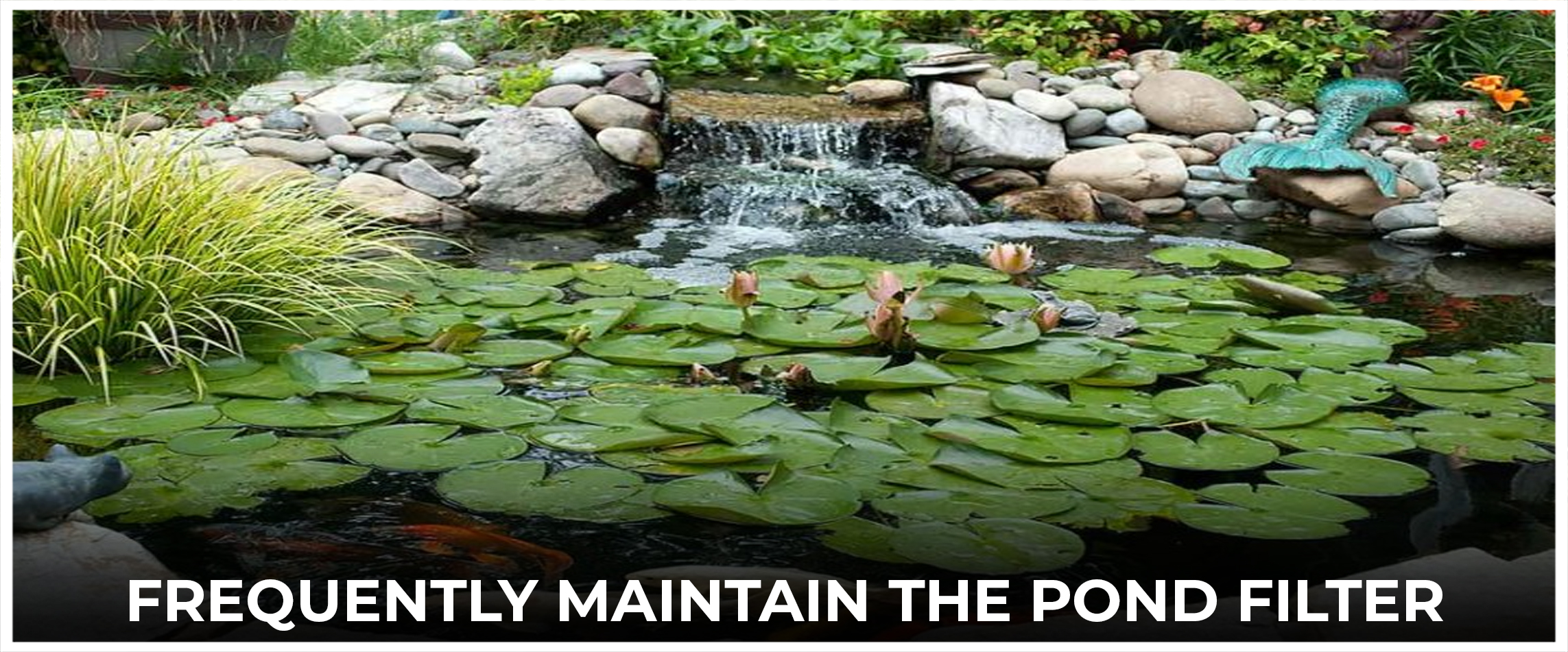
Frequently Maintain the Pond Filter
Do koi ponds need filters? For koi pond maintenance, the filter is required, and it must be cleaned often to eliminate buildup and keep it working well. In the middle of summer, one should clean it every week.
But in spring and fall, one should clean it every two weeks. In winter, once a month is good enough.
Do koi fish need a filter? The filter is required for koi fish, and regularly cleaning a koi pond a little bit at a time saves time for koi fish pond care.
Do not use tap water to clean the filter media. Instead, use the water that you took out of the pond. Many filters have built-in cleaning features to make it easier to keep them clean. Some filters can even clean themselves automatically.
Predator Threats
Birds, raccoons, and cats can be a big problem for big or small koi pond. They hunt the fish and can cause a lot of damage.
How to keep koi fish safe from other animals that might harm them? Consider putting up barriers around the pond, such as nets, fences, or motion-sensing devices.
One might wonder how to keep a koi pond clean in this scenario. Make places for fish to hide and stay safe in the pond using rocks, plants, and things they can hide under.
Also, animals that might harm others should be stopped by removing their food and keeping the pond clean.
Koi Pond Water Treatment
Pond beginners might wonder, will chlorine kill fish in a pond? A koi pond filled with tap water will have chlorine to kill the bacteria and other microbes.
Chlorine is not adequate for fish and may also destroy the bacteria that filter the water. Therefore, chlorinated water must be dechlorinated, and tap water should be fish-friendly.
On the other hand, others would be uneasy if they were to add chlorination or other chemicals to their ponds. Therefore, rather than this, water purifiers could be used as an alternative for koi pond maintenance.
Rainwater is a feasible option, but it is crucial to confirm that stagnant water has not been there for a long while, as low oxygen levels or low pH can have the same effect on the water.
A routine water quality check before supplying the water to the pond shall establish a benchmark of acceptability value and be used to ensure safety for aquatic life.
While not every time they are not necessarily supposed to be carried out, the users must still be careful when using rainwater.
When koi pond water change is immediate, and there is a lack of koi pond water conditioner or a water filter, try other ways that are a last resort.
If one wants a high-volume siphon, one can set the hose nozzle at the highest setting, direct it upwards, and weigh it down at the lake’s edge with a brick.
The small waterfalls on the pond that bounce back and forth in the air before touching the pond will remit chlorine, but it is not the best. Thus, even avoiding using public transport and walking is better than nothing.
Add Oxygen To the Pond
For koi pond maintenance, we suggest cutting off the interaction between pond water and air in winter by discharging waterfalls and turning off fountains to prevent oxygen demand as the fish’s respiration process slows down.
On the contrary, maximum air-water mixing must occur during warm weather by turning everything to maximum operation and enhancing gas exchange.
Through the air pump system in the summer, more oxygen is introduced into the water, which in turn increases the absorption of gases into the atmosphere.
Likewise, air can be incorporated into filters as a pre-filter to improve biological filtration, and some filters come with a pump as a backup in case of pump failure.
Solar air pumps could also be kept as backup power supplies during blackouts. During cold months, the ponds should not be completely frozen over because this will impede oxygen exchange and could damage the fish.
Install the filter with the part one can use as an air pump to clean it when required and to use inside the pond at all times.
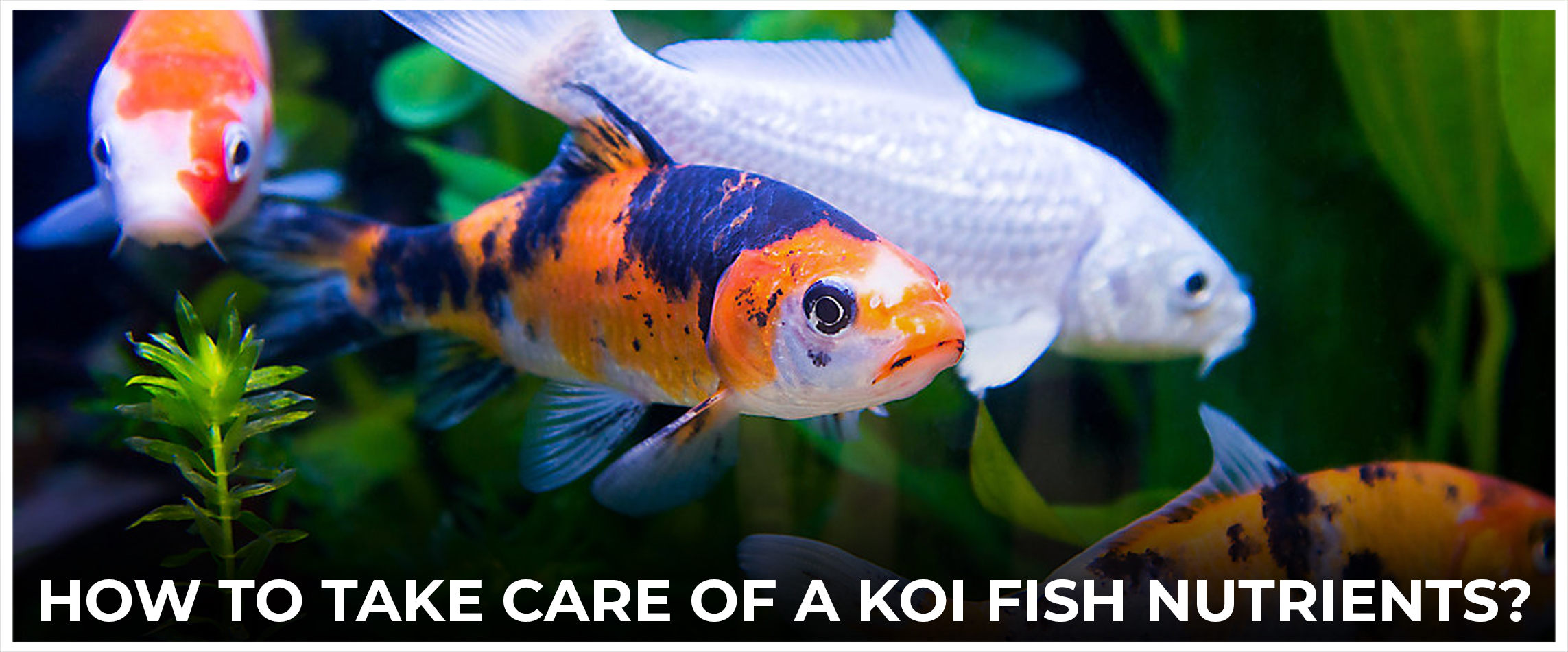
How To Take Care Of A Koi Fish Nutrients?
Too many nutrients in the pond water can cause algae and other harmful organisms to grow more, making the water terrible and the koi fish sick.
Good ways to manage nutrients include reducing the amount of extra nutrients, like uneaten fish food, natural waste, and fertilizer that washes away.
If one is worried about how to keep koi pond clean? Regularly clean a koi pond by removing leaves and dirt from the koi fish water surface and bottom for koi pond maintenance.
This will stop harmful nutrients from building up. Consider putting plants like lilies or other plants that grow underwater in the water. These plants can help keep the water clear and in balance.
Guidance on Handling Koi
When you think about how to put koi in a pond and how to get koi out of a pond, remember to treat the fish compassionately as their well-being is a top priority.
In order to place koi into a pond, first acclimate them bit by bit to the temperature of water by floating a transport bag or container in the pond.
Before letting them in, simply make sure the water parameters in the pond fit quite well for koi, and make any needful adjustments.
Carefully launch the koi into the pond; let them have the freedom to venture out of the container as they please. On the contrary, keep a holding tank with enough water from the pond ready for temporary accommodation of the fish while removing koi from the pond.
Use a fish net or koi sock and slowly order the koi to one end of the pond without any unpredictable actions that may create stress.
Gently lift each koi one by one and move them to the holding tank, being very cautious so that any koi does not get hurt during the movement.
Seasonal Considerations in Koi Pond Maintenance
Taking care of a koi pond changes depending on the time of year. One can change the upkeep schedule depending on the time of year.
Spring: As we embrace spring with bright colors and warmth, koi also become more active, coming from their previous sleep during the colder winter times.
Carry out a detailed cleaning of the pond enclosing waste and sludge, as well as any debris that is collected. Become acquainted with winter equipment and get ready for opening, if there is any.
Summer: Higher temperatures may influence algae growth to the point of becoming undesirable. Provide actions that can stop algae growth: shade, filter improvement, and aquatic plants.
Check water temperature and oxygen levels, particularly during the heat wave period, to prevent fish from causing stress.
Fall: Autumn leaves can pose a problem as they decompose and release nutrients in the water, causing water quality violations.
Place a pond net over the pond surface so the leaves and debris do not decompose and sink to the bottom. A simple net can act as a sound filtration system and reduce accumulated pollution that negatively affects the ecosystem.
Do not feed the koi as much and less frequently as their metabolic rate falls with cooler temperatures.
Winter: As the temperatures drop, the koi live in a slow-paced manner. Get the pond ready for winter and spend to buy a de-icer or pond heater to prevent it from freezing.
Either reduce feeding or feed using the cold-water diet, which is the energy needed by koi to regulate the body temperature is reduced.
Advanced Techniques
For experienced koi pond enthusiasts looking to elevate their maintenance practices, consider implementing these advanced techniques
UV Sterilization: Don’t forget a UV sterilizer to computerize the filtration system in order to stunt algae, parasites and suspicious bacteria in the pond.
The UVA light completely kills most microorganisms, which improves the perception and quality of the water.
Ozone Koi Pond Treatment: Ozone generators can be an option for adding to the filtration system and the functionality to provide water purification.
Ozone is an oxidant; it thus oxidizes organic pollutants, bacteria, and odor, breaking them down to create koi pond cleaner, healthier water.
Automatic Water Testing Systems: Provide such facilities with automated water testing systems that carry out round-the-clock surveillance and give instant data and reports about contamination.
Such a process reduces time and effort for koi maintenance tasks and provides real-time control over water purity.
Koi Health Monitoring: For koi pond maintenance, design a health check program by maintaining routine health monitoring of the koi, chopping them for gross defects, screening them for parasites, and performing frequent health checks.
Broadening the range of early warning systems ensures speedy intervention and prevention of disease spread on a large scale.

Final Words
In a peaceful koi pond, there is a lot of beauty, peace, and calmness. But, behind this pretty scene, there is much hard work, skills, and careful attention, which is koi pond maintenance.
Maintaining a koi pond is more than just a task – it’s a commitment to keeping the fish healthy and the pond ecosystem in good shape.
In this blog, we have discussed, is a koi pond hard to maintain and how to care for a koi pond, like ensuring the water is clean and using advanced methods for the best care.
We have looked at ways how to maintain koi pond and to keep koi ponds healthy all year round and discussed advanced strategies to help people create and sustain beautiful ponds.
